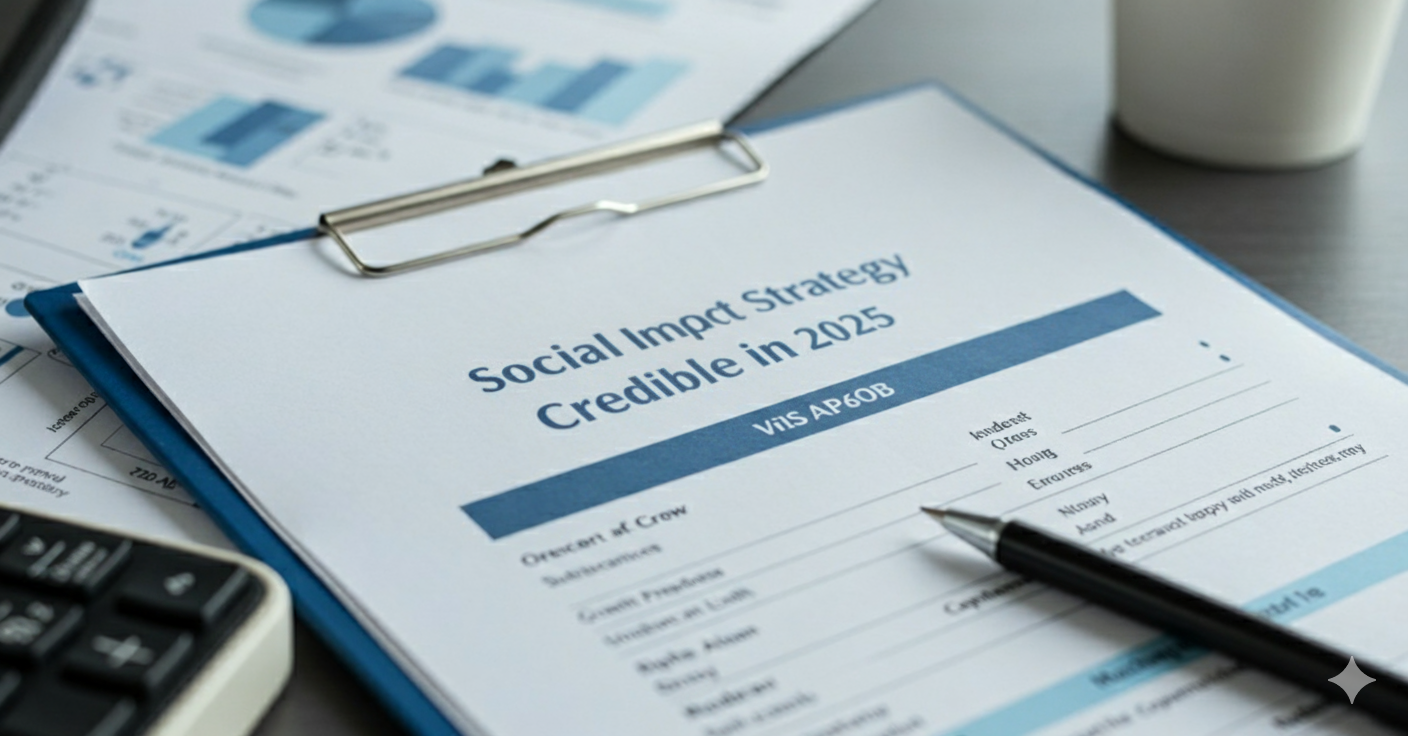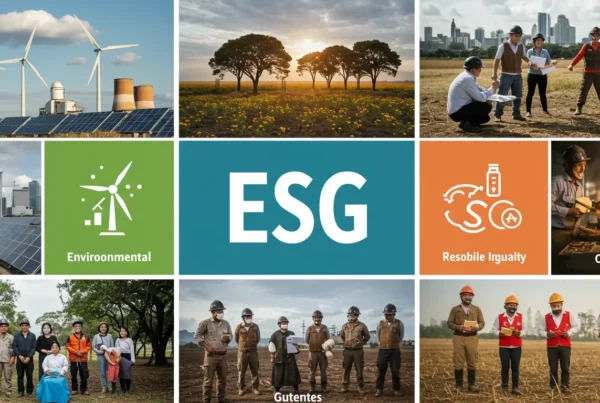The credibility of a social impact strategy in 2025 is no longer just about intention, but rather it is about integration, transparency, and accountability. The ecosystem has evolved from the charitable acts and polished reports model. In contemporary society, the measurement of credibility is based on the effectiveness of the organization in conforming to international criteria, the integration of the ESG principles, and the honest conveyance of its initiatives. Together, we will delve into the real parameters of what constitutes a credible social impact strategy in this fresh age.
Emerging Standards: The Backbone of Credibility
The biggest shift in 2025 is the consolidation of impact reporting standards. Organizations are aligning with frameworks such as the GRI, ISSB (IFRS Sustainability Standards), ESRS (EU’s Corporate Sustainability Reporting Directive), and TCFD. Together, these systems push companies to move from vague narratives toward measurable and verifiable outcomes.
This alignment has two key benefits:
-
Comparability and auditability – It becomes easier for investors, regulators, and communities to verify impact claims.
-
Reduced selective reporting – Unified standards discourage cherry-picking positive results while ignoring negative externalities.
At the heart of these frameworks lies double materiality—a concept that asks not only how sustainability issues affect the business, but also how the business affects society and the environment. In short, credibility now requires demonstrating both financial and ethical accountability.
ESG Alignment: More Than a Buzzword
In 2025, ESG alignment isn’t an optional label—it’s the DNA of credible social impact. A company’s environmental, social, and governance performance is now seen as a direct indicator of its long-term value and integrity.
-
Environmental (E): Reducing carbon footprints and managing resources responsibly.
-
Social (S): Prioritizing diversity, fair labor, and community wellbeing.
-
Governance (G): Ensuring ethics, transparency, and board-level accountability.
What separates credible organizations from superficial ones is integration. True ESG-aligned strategies are embedded into decision-making, supply chains, and incentive structures—not siloed in CSR departments. The result is measurable progress backed by traceable data, not just corporate storytelling.
Investors and partners increasingly demand assurance-backed ESG metrics. This shift has transformed ESG reporting from a PR exercise into a credibility signal proof that a company’s values are not only stated but operationalized.
Authenticity and Transparency: The New Social Currency
Authenticity has become the most valuable and fragile asset in social impact. Stakeholders can now identify insincere efforts within seconds, thanks to greater data accessibility and watchdog organizations. “Impact washing” or “greenwashing” can undo years of brand equity.
Credible strategies now balance narrative and evidence. Companies are learning to:
-
Disclose both achievements and shortcomings.
-
Share real stories of communities and employees affected by their work.
-
Present live data dashboards instead of static annual reports.
Transparency is the most basic requirement, no doubt about it. In fact, it goes beyond merely posting impact numbers and letting people know how these numbers are arrived at.Sample.Methodologies, verification by third parties, and periodic updates are measures that the stakeholders recognize as being responsible and transparent on a daily basis and not just annually.
This is the point where storytelling and substance coalesce. The brands that people really trust are those that have both measurable outcomes and narratives that revolve around people, thus expressing their intention, care, and the difference made in tangible form.
Read More: Social Impact Consulting
Governance and Stakeholder Engagement
In every significant impact plan, the enforcement of integrity by a governance structure is a key component. In 2025, it is numeral that board scrutiny and executive incentives relevant to ESG results are standard practices. Such a top-level accountability is the only way, without which, social impact becomes mere and shallow.
Another great credibility driver is stakeholder co-creation. Instead of working in solitude, highly regarded organizations invite employees, customers, and community partners to Go. This collaboration, by simple logic, suggests that impact is not just for stakeholders; they are part of it.
Stakeholder engagement has the potential to change social impact from a corporate move to a collective mission, thereby improving both the outcomes and the trust.
Challenges and Risks to Credibility
Even with global progress, 2025 brings challenges that test the integrity of social impact strategies:
-
Data reliability: Gaps in impact measurement still exist, especially in emerging markets.
-
Framework fatigue: Too many overlapping standards can create confusion.
-
Greenwashing risk: Overstated claims can trigger public backlash and legal scrutiny.
-
Balancing transparency and privacy: Sensitive data on beneficiaries or operations must be handled responsibly.
Credible organizations navigate these risks by investing in robust impact measurement systems, ensuring that every data point can be traced, verified, and contextualized.
Case Insights: Who’s Doing It Right
Some companies are leading the way. In 2025, top performers in corporate impact share key traits:
-
They publish living reports—continuously updated, data-driven dashboards rather than static PDFs.
-
Their storytelling features real people, not stock imagery or vague commitments.
-
They collaborate with independent auditors or NGOs for third-party assurance.
-
They integrate ESG into procurement, talent management, and product innovation.
These organizations prove that credibility doesn’t come from the scale of investment—it comes from consistency, evidence, and honesty.
The Road Ahead
The AI-assisted ESG reporting and real-time verification are the next frontiers after 2025. Today, organizations benefitting from machine learning models are detecting inconsistencies, tracking progress, and publishing accurate data in a previously unattainable rapid time frame.
In futures, the winning entities will be those that focus on credibility as a continuous journey rather than a one-time activity. A credible social impact strategy is one that develops with proof, speaks clearly, and operates honestly.
FAQs:
1. What makes a social impact strategy credible?
Credibility comes from measurable outcomes, ESG alignment, third-party verification, and transparent reporting.
2. Why is authenticity important in social impact?
Authenticity builds trust. Stakeholders expect real evidence, not marketing language.
3. What frameworks define credible reporting in 2025?
GRI, ISSB, ESRS, and TCFD remain the most widely adopted and cross-recognized standards.
4. How do companies avoid greenwashing?
By disclosing full context, providing traceable data, and validating claims through independent audits.
5. How does transparency affect brand reputation?
High transparency strengthens stakeholder confidence, investment appeal, and long-term resilience.
Expert Insight:
The year 2025 is not about being flawless but is about being credible through proof. The companies that will do well are the ones that will transparently demonstrate their performance, adhere to universally accepted guidelines, and speak openly about the progress and hurdles they faced. The social impact sector is at a stage where true success is characterized by honesty and clarity.




